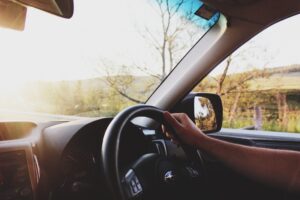With temperatures set to drop, now is the perfect time to make sure your car is ready for everything the weather has in store.
Winter driving can be a challenge, even for the most experienced drivers. Snow, sleet and ice would be enough to make even Lewis Hamilton quake in his boots! It’s not surprising that breakdowns are far more common during this time of year. But fear not, help is on hand to make sure you and your car arrive in one piece this winter, from cobbling together a ‘survival kit’ to checking your lightbulbs are in working order, all your winter woes will be covered below.
Tip 1: Top Up Fluids
It is important to make sure you’ve topped up the fluids in the car. Whilst this is important year – round, it becomes even more essential during the winter. So make sure that your windscreen wash, anti-freeze and oil levels are all satisfactory and topped up throughout the winter period.
Tip 2: Plan your Journey and Keep your Car Fuelled
If there are a number of routes to your destination consider which is likely to be the safest to drive in winter weather conditions. First of all listen out for any travel bulletins and weather updates on the news and social media that will affect the area you are driving through. Then opt for major roads that have a higher chance of being cleared, gritted and properly prepared for the elements. If punctuality is important, always allocate yourself extra time to allow for bad weather conditions. Remember to always put safety before speed, especially when the bad weather sets in. Keep your tank topped up at least halfway so you’re not left out in the cold if you run out.
Tip 3: Prepare a Survival Kit
Okay, I know this sounds extreme, but it’s all about the planning, especially if you’re venturing across the Pennines or Lake District to visit the Grandparents. Whilst it is unlikely, imagine you’re stranded for the night, you’ll be mighty thankful for that warm blanket and packet of biscuits then! When packing your survival kit try to be as practical as possible, the following would all be useful:
• First aid kit
• Torch
• Batteries
• Fully charged mobile phone
• Shovel
• Tow rope
• Wellies
• De-icer
• Blanket (No power means no heater!)
• Warm clothes
• Food
This little bumper pack should see you right, should you end up stranded or waiting for help somewhere in cold and miserable weather.
Tip 4: Keep your Windscreen and Light Bulbs Clean
It seems obvious, but a windscreen obscured by ice or snow will impair your vision which could lead to unsafe driving and even 3 points if your stopped by the police. So it goes without saying, whip that de-icer out (not a boiling hot kettle!) and make sure you have full vision before you start your journey. If you experience condensation during your journey (a likely occurrence in the cold weather) then use the air conditioning to quickly demist the car.
If you are driving in the winter it is likely you will have to drive in the dark at some point, therefore you will be using your fog lights headlights more often than usual. In order to keep them in working order and maximise their use, give them a wipe down before setting off on every journey, ensure they remain clear and bright.
Tip 5: Slow Down and Keep your Distance
You need to operate your car with slow, gentle manoeuvres during the winter months. Stopping distances increase by as much as ten times during snow and ice, so park your Lewis Hamilton overtaking manoeuvres and focus on slow ‘n safe instead. Make sure you keep plenty of distance between you and the car in front. As the saying goes, better to be safe than sorry.




